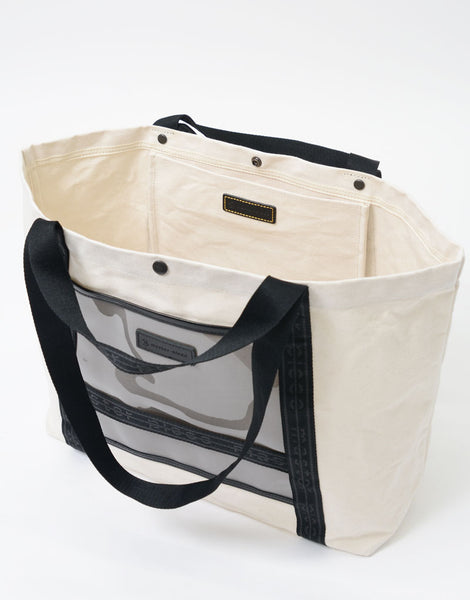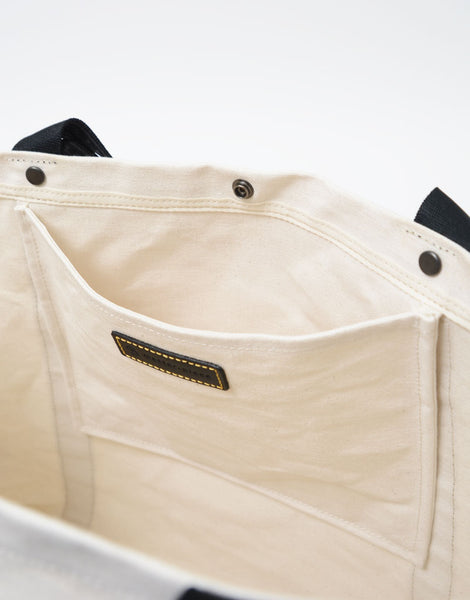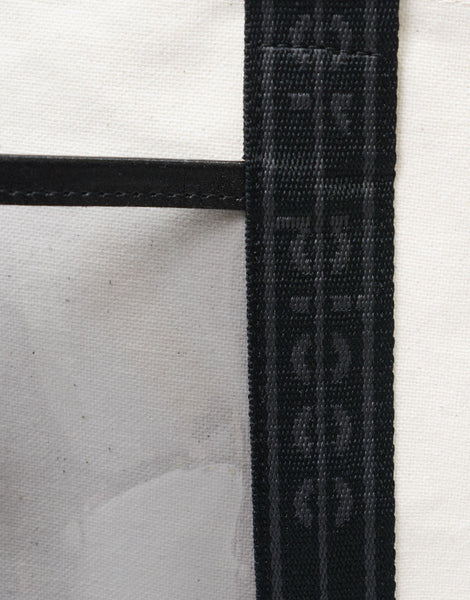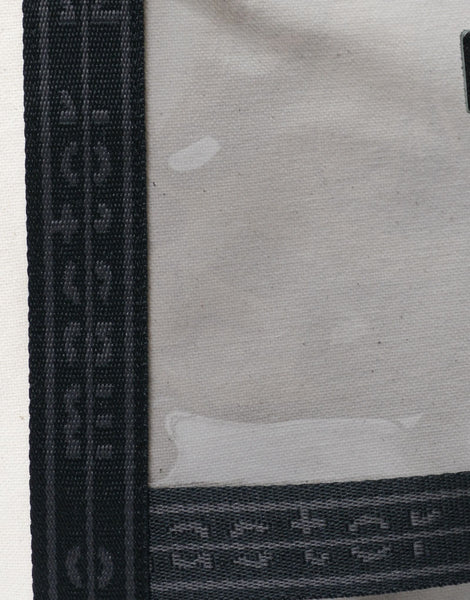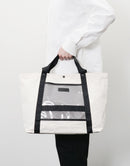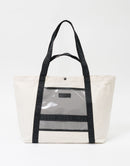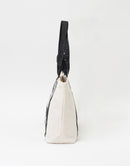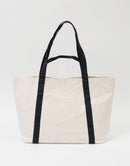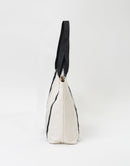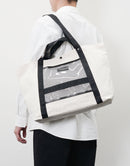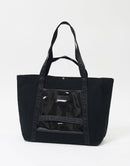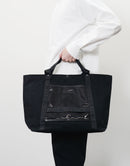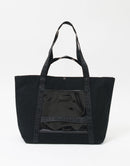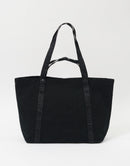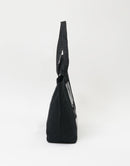ITEM INFORMATION
The main material is yarn-dyed Selvedi No. 8 canvas woven at an ultra-high density on an old shuttle loom, and by 33 of the 25 weft threads are normally driven into the weft, the material is unique to the shuttle loom.
Another characteristic of this material is that it has a hardness that is like a paraffin finish, and after dyeing the yarn, it is impregnated with a special oil to create an oil-paraffin finish.
Skilled craftsmen do all twisting, dyeing, weaving and finishing in Kojima, Kurashiki City, and are materials that cannot be mass produced, as they can only be weaved 50m a day.
The clear film attached material is made from domestic color film manufactured at Okamoto Co., Ltd.'s Shizuoka factory.
The attached leather has been tested by the Japan Leather Technology Association for 13 types of hazardous substances (JES), and does not use any substances harmful to the human body, hexavalent chromium, and is tanned with vegetable tannins.
*Outlet products are not eligible for returns or exchanges.
| Size | W400 H340 D130 mm |
|---|---|
| Weight | About 450g |
| Material | |
| Attention |
Detail
